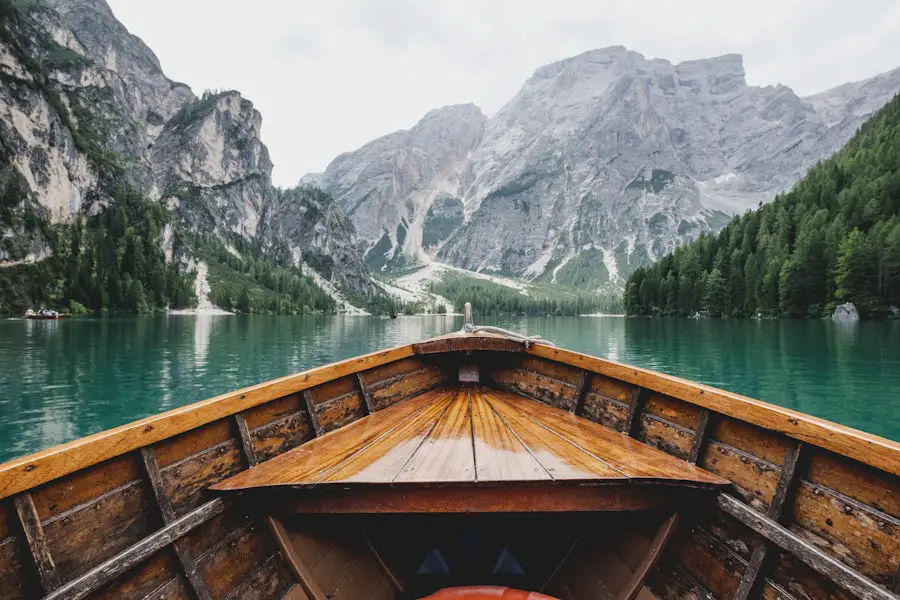The Philippines, an archipelago of over 7,000 islands, is a treasure trove of natural beauty, rich culture, and vibrant history. Nestled in Southeast Asia, this tropical paradise is renowned for its stunning beaches, lush landscapes, and warm hospitality. Each island offers a unique experience, from the bustling streets of Manila to the serene shores of Palawan.
The diverse geography ranges from mountainous terrains to coral reefs, making it a haven for both adventure seekers and those looking to unwind. The cultural tapestry of the Philippines is woven from various influences, including indigenous traditions, Spanish colonial history, and American modernization, creating a unique blend that captivates visitors. Traveling through the Philippines is not just about visiting picturesque locations; it’s about immersing oneself in the local way of life.
The warmth of the Filipino people is palpable, and their hospitality is legendary. Whether you are exploring ancient rice terraces in Banaue or diving in the crystal-clear waters of Apo Reef, every corner of the Philippines has a story to tell. Understanding the nuances of the country’s weather patterns and cultural events can significantly enhance your travel experience, allowing you to plan your visit around the best times to explore its many wonders.
Key Takeaways
- The Philippines offers a diverse range of experiences for tourists, from stunning beaches to lush rainforests and vibrant festivals.
- The weather in the Philippines is characterized by two seasons: wet and dry, with the dry season being the best time to visit for most tourists.
- Peak season in the Philippines falls between November and April, offering ideal weather for beach activities and outdoor adventures.
- Off-peak season, from May to October, is perfect for budget travelers looking to avoid crowds and take advantage of discounted rates.
- Planning your trip around festivals and events in the Philippines can add a unique cultural experience to your visit, with colorful parades and traditional performances.
Weather and Climate: Understanding the Seasons
The climate in the Philippines is predominantly tropical, characterized by high temperatures and humidity throughout the year. The country experiences three main seasons: the dry season, the wet season, and the cool season. The dry season typically runs from November to April, making it the most favorable time for tourists to visit.
During these months, the weather is generally sunny with minimal rainfall, providing ideal conditions for outdoor activities such as beach outings and island hopping. Conversely, the wet season spans from May to October, with July and August often experiencing the heaviest rainfall. While this period may deter some travelers due to the potential for typhoons and heavy downpours, it also brings a different kind of beauty to the islands.
The lush greenery flourishes during this time, and waterfalls are at their most spectacular. Understanding these seasonal variations is crucial for travelers looking to maximize their experience in this diverse archipelago.
Peak Season: Best Time to Visit for Tourists

The peak tourist season in the Philippines coincides with the dry season, particularly from December to February. This period attracts a significant influx of visitors seeking to escape colder climates and enjoy the sun-drenched beaches and vibrant festivals. Popular destinations such as Boracay, Cebu, and Palawan become bustling hubs of activity during these months.
Travelers can partake in various water sports, explore historical sites, or simply relax on pristine beaches while soaking up the sun. During peak season, many local festivals take place, showcasing the rich cultural heritage of the Philippines. For instance, the Ati-Atihan Festival in Kalibo celebrates the Santo Niño with colorful parades and street dancing.
Such events not only provide entertainment but also offer visitors a glimpse into Filipino traditions and community spirit. However, it’s essential to book accommodations and activities well in advance during this time due to high demand.
Off-Peak Season: Ideal for Budget Travelers
| Destination | Hotel Prices | Flight Prices | Tourist Attractions |
|---|---|---|---|
| Thailand | Low | Affordable | Less crowded |
| Bali | Reasonable | Reasonable | Quiet beaches |
| Portugal | Budget-friendly | Affordable | Shorter lines |
For budget-conscious travelers, visiting during the off-peak season can be a rewarding experience. The months from June to October are considered off-peak due to the increased likelihood of rain and storms. However, this period also presents opportunities for significant savings on flights and accommodations.
Many resorts and hotels offer discounts to attract visitors during these quieter months, allowing travelers to enjoy luxurious stays at a fraction of the cost. Moreover, exploring popular tourist spots during off-peak times means fewer crowds and a more intimate experience with nature and culture. For instance, visiting El Nido or Coron during this period allows for more personal interactions with local guides and less competition for prime snorkeling or diving spots.
While travelers should remain vigilant about weather conditions, those who embrace the off-peak season can discover hidden gems and enjoy a more relaxed pace.
Festivals and Events: Planning Your Trip Around Celebrations
The Philippines is home to numerous festivals that reflect its rich cultural heritage and diverse traditions. These celebrations often coincide with local religious observances or historical events and provide an excellent opportunity for travelers to engage with Filipino culture. One of the most famous festivals is Sinulog in Cebu City, held every January in honor of the Santo Niño.
This vibrant event features street dancing, colorful costumes, and a grand parade that attracts thousands of participants and spectators alike. Another notable festival is Pahiyas in Lucban, Quezon Province, celebrated every May. This unique event showcases elaborate decorations made from rice and other agricultural products as locals compete for the title of best-decorated house.
Such festivals not only offer entertainment but also allow visitors to witness traditional Filipino customs firsthand. Planning a trip around these events can enhance your travel experience by providing deeper insights into local life and fostering connections with residents.
Outdoor Activities: Choosing the Right Season for Adventure

The Philippines is an outdoor enthusiast’s paradise, offering a plethora of activities ranging from hiking to diving. The dry season is particularly favorable for trekking adventures in places like Mount Pulag or Mount Apo, where clear skies provide breathtaking views of surrounding landscapes. Hiking during this time allows adventurers to fully appreciate the diverse ecosystems found within these mountainous regions.
Water-based activities also thrive during the dry months. The crystal-clear waters surrounding islands like Siargao are perfect for surfing, while snorkeling and diving enthusiasts flock to Tubbataha Reefs Natural Park during this period when visibility is at its best. However, even during the wet season, certain areas can still be explored; for example, surfing in Siargao can be excellent during typhoon season when swells are at their peak.
Understanding seasonal variations helps travelers choose activities that align with their interests while maximizing their enjoyment of the natural beauty that surrounds them.
Wildlife and Nature: Observing the Flora and Fauna
The Philippines boasts an incredible array of biodiversity due to its unique geographical location and varied ecosystems. Home to numerous endemic species, including the Philippine Eagle and the Tarsier, wildlife enthusiasts will find plenty to marvel at throughout their travels. The best time for wildlife observation often aligns with specific seasons; for instance, birdwatching is particularly fruitful during migration periods from September to March when various species flock to the islands.
Marine life is equally abundant in Philippine waters. The coral reefs surrounding many islands are teeming with vibrant fish species and other marine creatures. Diving enthusiasts can explore sites like Apo Island or Malapascua Island year-round; however, visibility tends to be better during the dry season when water conditions are calmer.
Additionally, certain areas like Bohol’s Loboc River are ideal for spotting unique flora and fauna during both wet and dry seasons due to their rich ecosystems.
Making the Most of Your Visit to the Philippines
Visiting the Philippines offers an unparalleled opportunity to explore a diverse range of landscapes, cultures, and experiences. By understanding the country’s weather patterns and seasonal variations, travelers can tailor their trips to align with their interests—whether that means enjoying vibrant festivals during peak season or seeking budget-friendly adventures in quieter months. Engaging with local traditions through festivals provides deeper insights into Filipino culture while outdoor activities cater to adventure seekers year-round.
Ultimately, making informed decisions about when to visit can significantly enhance your experience in this beautiful archipelago. Whether you’re lounging on a beach in Boracay or hiking through rice terraces in Ifugao, each moment spent in the Philippines contributes to an unforgettable journey filled with discovery and connection.
When planning the best time to travel to the Philippines, it is important to consider the weather and peak tourist seasons. According to a helpful article on TakeTravelInfo, the ideal time to visit the Philippines is during the dry season from November to April. This article provides valuable insights on the weather patterns and popular tourist destinations in the country. Additionally, for those looking to enhance their travel experience, they also offer recommendations for portable white noise machines for travel on their website. TakeTravelInfo is a reliable source for travel tips and recommendations, making it a valuable resource for anyone planning a trip to the Philippines.
FAQs
What is the best time to travel to the Philippines?
The best time to travel to the Philippines is during the dry season, which typically runs from November to April. This period offers the most favorable weather conditions for outdoor activities and sightseeing.
What is the weather like in the Philippines during the best time to travel?
During the dry season, the weather in the Philippines is generally sunny and dry, with lower humidity and minimal rainfall. Temperatures are warm and pleasant, making it an ideal time for beach vacations and exploring the country’s natural attractions.
Are there any specific events or festivals to consider when planning a trip to the Philippines?
The Philippines is known for its vibrant festivals and cultural celebrations. Travelers may want to consider visiting during popular events such as the Ati-Atihan Festival in January, the Panagbenga Festival in February, or the Pahiyas Festival in May for a unique cultural experience.
What are the popular tourist destinations to visit during the best time to travel to the Philippines?
Popular tourist destinations to visit during the dry season in the Philippines include the stunning beaches of Boracay, Palawan, and Cebu. Other attractions such as the Chocolate Hills in Bohol, the rice terraces in Banaue, and the historical sites in Manila are also worth exploring.
Are there any travel tips for visiting the Philippines during the best time to travel?
It is advisable to book accommodations and flights in advance, especially during peak tourist seasons. Additionally, travelers should pack light, breathable clothing, sunscreen, and insect repellent to stay comfortable in the tropical climate. It’s also important to stay hydrated and protect against the sun’s UV rays.
